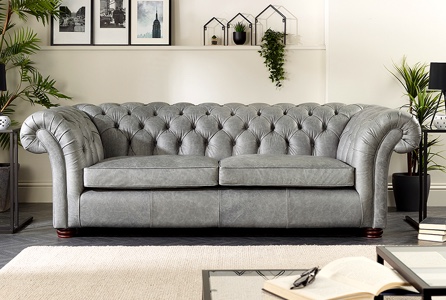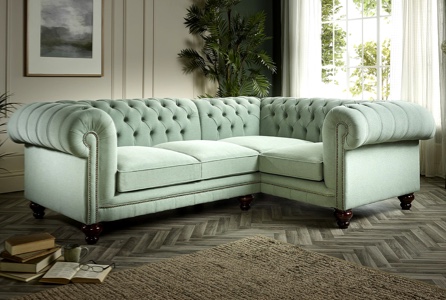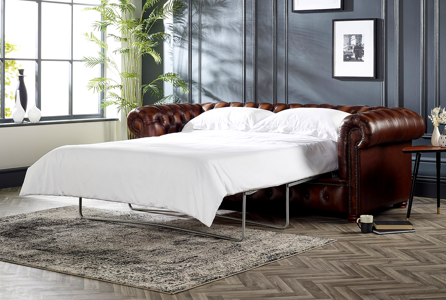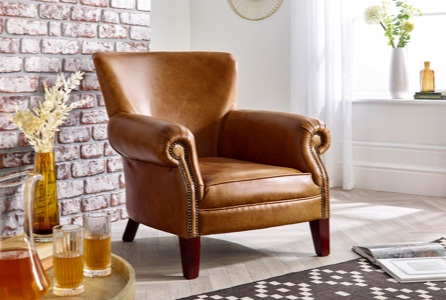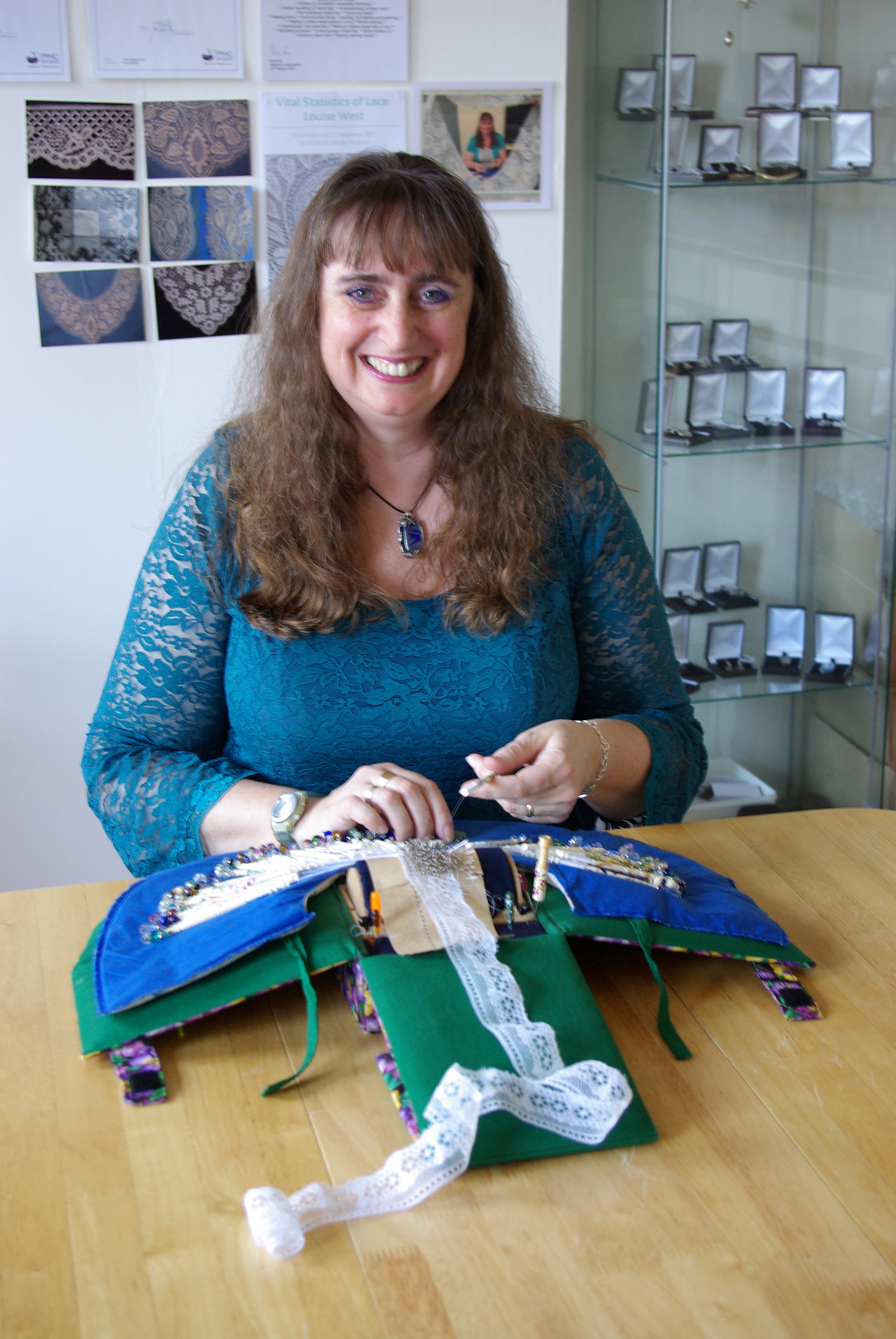Handmade Heroes
Handmade Heroes: Meet Louise West, Lace Maker Extraordinare
If you’ve ever visited an old relative and had your tea and cake served on lace doilies, we’re pretty sure your perception of the delicate material is 100% positive. After all, it’s such a lovely, dainty fabric. So who knew lace actually holds a bit of a dark history?! We certainly didn’t here at Distinctive Chesterfields. Not until we became acquainted with Louise West, anyway. Louise began bobbin lace-making in 1992 and after immersing herself in countless courses, she progressed with the skill quickly.
Gaining experience in traditional English bobbin laces, particularly Buckinghamshire Point Ground Lace and Floral Bedfordshire, Louise today combines her love of lace with her passion for fine silver jewellery – making beautiful pieces and selling them via her website, in between seeing her work in various galleries and exhibitions.
Without further ado, then, meet Louise West…
Above: Louise West at work
Distinctive Chesterfields (DC) You take an old material – lace – and give it a brand new lease of life, modernising it and adding it to beautiful jewellery. What’s the general feedback/reaction to lace being used in this way? Positive, we imagine?
Louise: People love lace in almost all its formats, they really like the tradition of lace but in the 21st century it is hard to wear on a daily basis, but by incorporating the imagery of it into jewellery it allows lace to be worn daily again. The function of lace historically was to make the wearer feel beautiful, now jewellery has taken over that function – if you are dressing up for a special occasion or to go out, you put on your best jewellery. My jewellery incorporates the tradition with contemporary pieces and the aim is for you to enjoy wearing it
DC: We’d love to know a little more about your lace-making workshops, which you hold in Derby. Can anyone come along? Or is it for already-skilled seamstresses and home sewers?
Louise: I run a range of workshops, with the majority of them being aimed at all levels including complete beginners, you only have to be able to count to four to learn the two basic stitches. It is actually beneficial to everyone to have mixed classes as students gain confidence and learn from others in the class. For example, someone starts lace making and after a couple of classes they aren’t feeling very confident, but then someone new starts and they suddenly realise that a couple of classes ago they were in that position and that they have made huge progress. The workshops and classes are all about individual learning and progress, everyone works at their own speed. You don’t need to be skilled in any needle-crafts to try it, and beginners can come along and borrow the equipment for the day before deciding to buy their own equipment.
Above: Top left, Louise’s own lace design, top right, lace in progress bottom left, an exhibition of Louise’s creations in Harrogate, and bottom right: wire lace
DC: Aside from jewellery, what’s the most elaborate way you’ve used a piece of lace creatively?
Louise: I think this would have to be the Nottingham Contemporary, with the concrete lace façade. I was employed by the architects to interpret an old piece of 1847 Richard Birkin machine-made lace, and turn it into a design that could be cast into concrete to cover the façade of the building. There are 93 concrete panels around this large contemporary art centre in which the design is cast. It was a massive project both in size and commitment, as I was a first year full time undergraduate at the University of Derby at the time. It was a challenge in so many ways but a fantastic experience and one that was partly responsible for the journey that followed into contemporary lace.
Nottingham Contemporary, pictured above
DC: What was it that initially sparked the idea to combine lace with fine silver jewellery?
Louise: This area of my work evolved rather than a ‘light bulb’ moment. I had already started playing with the silver when I started an MA in Art and Design. At the same time, I was having a solo exhibition at Pickford’s House Museum in Derby, and they asked if I could produce work for sale alongside the exhibition. I had already tried using machine lace for surface patterning, and it was a progression to use my own work to surface pattern the silver. I took on a studio at the university’s incubation unit for small business start ups, Bank’s Mill studios and from there the jewellery developed along with the workshops in both lace and jewellery. This continues to grow and I have recently moved into a bigger studio to cope with the demand and to be able to offer more student spaces.
DC: How is lace as a material to work with? We reckon it’s quite hard to use, with it being so delicate and all?
Louise: Lace is fantastic to work in, rather than work with. It isn’t as delicate as it first appears, although you do tend to treat it like that when you have spent hundreds of hours creating pieces. You design and make pieces in materials appropriate to their end use. I have created 3D sculptural pieces in wire, using traditional techniques and they are obviously not as delicate as very fine cotton threads. You can create pieces on a scale in thicker thread if you know it is going to get heavy use and washed frequently – such as edgings for table cloths. Even lace from 18th and 19th century has survived the rigours of time, and are still beautiful today. Lace historically was more valuable than jewellery and treated accordingly, with pieces being worn, removed and reused frequently. Lacemakers today tend to treat lace more gently, often framing pieces so that they can be appreciated without damage
DC: What other hobbies take up your time?
Louise: I love doing botanical illustration but recently I haven’t had a lot of time to do any. I also enjoy other textile crafts – Kumihimo, spinning, weaving, Stumpwork and other embroidery such as Hardanger and Casalguidi, although again I don’t have the time I would like to relax with these.
DC: How do you like to spend an evening off from work?
Louise: At the moment I am working a lot of new lace designs which I have designed, so sitting in front of TV and making lace. I enjoy reading as well but I haven’t managed to work out how to read and make lace at the same time.
DC: If you could share a couch with anyone –dead or alive – who would it be and why?
Louise: I think it would have to be one of the great designers from the 19th century – Thomas Lester. He was such a great innovator in the lace designs, incorporating animals into the lace, which were being seen for the first time at London Zoo, and also the plants being bought back by the plant hunters. His designs were so flowing and lifelike. One of his designs with ostriches sparked off my interest in working in a more 3D format and so led to the area of research that I did for the MA. I have so much respect for his work and aspire for my designs to inspire today’s lace makers as his have done for me.
DC: Tell us something we may not know about lace itself?
Louise: Lace has a very dark history in places, with events such as public hangings being commemorated on lace bobbins. Justice had to be seen to be done and so everyone was given a day off and went to the hanging, lace dealers made bobbins to commemorate the day. Six hangings were commemorated this way and the bobbins are often found for sale on the internet today. Lace is not the innocent textile that it first appears and this again adds to the fascination for me, the contrast of the apparently innocent with the dark history. There are so many undercurrents of contrasts behind it.
DC: Finally, what’s coming up for yourself and the business? Any exciting new developments on the way?
Louise: I have lots of events, talks, workshops and courses in the pipeline, including teaching all over the country this year and next. I am also offering a new 5 day course in September in my studio in Bedfordshire lace, which is the area I particularly specialise in. (all the courses can be found on my website). I am starting teaching for the WEA in Derby and Loughborough as well, so lots of new classes becoming available.
In addition to that I am working on a lot of new Bedfordshire lace designs which I am hoping to publish as a book next year. I never know what else will happen and so always looking for the next new challenge in lace.
Thanks to Louise for taking time away from lace making to chat to us here for our Handmade Heroes slot on the Distinctive Chesterfields blog. Like these interviews? You’ll find many more like this by clicking here or directly on the ‘Handmade Heroes’ category in the right hand side bar of this blog.
Don’t forget to head to Louise’s website to view some of her designs online, or to ask a question about any upcoming or past courses.
